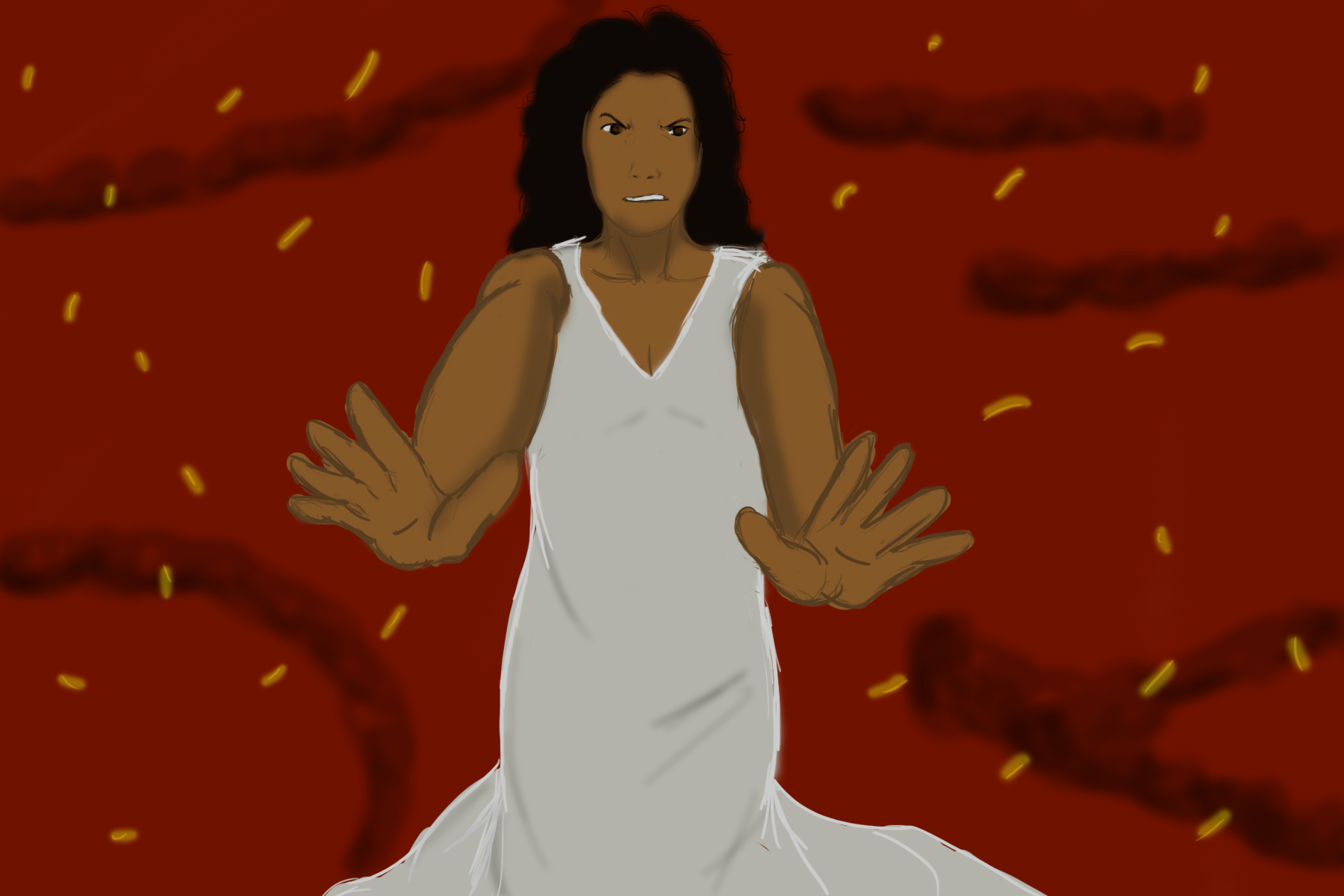Loosely based on Isidora Chacón Alvarez’s 2015 novel “Yo, Bruja,” the Netflix Original “Siempre Bruja,” or “Always a Witch,” has been a highly anticipated release this month.
Last summer, Women.com published a list of the 27 most memorable TV shows with elements of witchcraft. The list included a few fan favorites, such as the original “Charmed” and “Sabrina the Teenage Witch.” However great and nostalgic the list is though, there’s one notable factor that’s hard to miss: a lack of diversity.
Although the “Charmed” reboot includes women of color and representation of the LGBTQ+ community, the show’s ratings are not too great, and it can’t seem to escape the shadow that its 1998 predecessor cast over old and new fans alike. Traditionally, witches of color are aids to a white protagonist, or side characters that do not get the full amount of screen time they deserve.
To me, that’s why it was extremely disappointing to admit that “Siempre Bruja” was hard to sit through.
Let’s break it down.
A Pointless Romance, a Missed Opportunity
The primary goal of Carmen, the main protagonist, in the first season of “Siempre Bruja,” is to complete a mission given to her by the powerful wizard Aldemar the Immortal: to reconnect with her lover from the 1400s.
Such love is a force to be reckoned with, but even with the beautiful backdrop of Cartagena, Colombia, the romance was seriously lacking in its romantic appeal. Not only is the love between Carmen and Cristóbal problematic, but viewers do not experience any complex development between their supposedly epic love.
Halfway through the season, it’s revealed that Carmen’s father was buried alive and her mother was burned at the stake under the same charge Carmen was accused of. When she remembers this, it doesn’t make much of a difference to her; the opportunity to explore her lineage and understand her past is completely looked over.
Instead of emotionless love triangles that are not given much time to be explained or developed, why not focus on the fact that Carmen’s father was buried alive and her mother was burned at the stake under the accusation of witchcraft? It would have been a completely different show if Carmen had taken an interest in her parents’ lives instead of accepting (potentially false) information from the men around her.
Plot Holes, Plot Holes Everywhere
One of the major critiques I found in the series is the lack of proper transitional writing. When Carmen appears in contemporary Cartagena, audiences expected that she’d be frightened of modernity and take time to get used to technological and social advancements.
But Carmen’s transition is too easy. Immediately, she accepts this new world she’s been thrust into and nothing fazes her.
In fact, it isn’t until the very end of the show that Carmen’s true role in Aldemar’s mission is revealed. Villains are never properly introduced, threats fall flat and romantic moments are so glossed over that it’s almost impossible to feel any excitement or form connections with characters.
A Lack of Complexity in Villains and Magic
Typically, fantasy worlds engross viewers because of how complex and diverse they are. Political intrigue, magic systems and alluring villains are part of this formula that never fails.
“Siempre Bruja” is definitely a show about witches, but there aren’t many witches presented in the show. Carmen, Ninibe, Lucien and Aldemar the Immortal are the only beings with magical abilities that exist in the world. Are there not any other magical beings in 1646? What about in modern-day Colombia?
Villains in the show are hyped up by other characters, but they aren’t as terrifying as they’re made out to be. Easily defeated and flat, these villains could benefit from a makeover in which they’re given a three-dimensional treatment. Today, viewers want villains that they love to hate. Needless to say, that isn’t the case in “Siempre Bruja.”
Carmen’s Climactic Moment Falls Flat
Without an engaging magical cast, “Siempre Bruja” depends on its protagonist to reach a point of magical greatness. All season long, it’s stated over and over that Carmen is “The Chosen One” and that her lineage makes her great. And, despite the fact that it’s never clear why she’s so great (or if her mother was a witch or not), the show runs on the idea that the series’ villain cannot be defeated by anyone but Carmen.
But Carmen doesn’t reach her magical peak until the third to last episode of the show. And still … How does she achieve it? Despite not understanding her powers and not knowing the villain’s motivations, Carmen becomes convinced that she’s ready to battle him.
There isn’t a montage of Carmen practicing and failing. There isn’t any mentoring from another witch. Producers decided that Carmen’s character needed to arc, so they gave her a climactic moment that didn’t deliver. The fact is, Carmen deserves a better storyline. She was manipulated during most of the show, and it isn’t the final few episodes that characters finally ask Carmen if she wants to return to a life of slavery.
It’s a question that looms over every episode, over every instance in which Carmen expressed how she could only be happy with Cristóbal in 1646.
Seeing as this is one of the few shows that offers a female protagonist of color, it’s a shame that “Siempre Bruja” didn’t flesh out the themes it presented. It does not do justice to its theme of slavery, and it fails to present a strong narrative for Carmen Eguiluz.
















